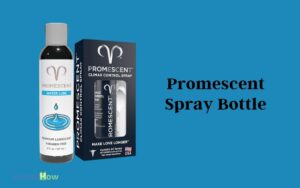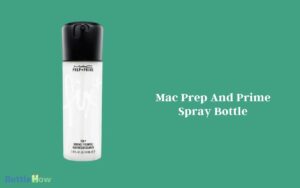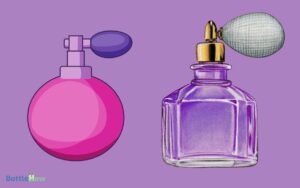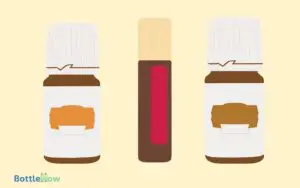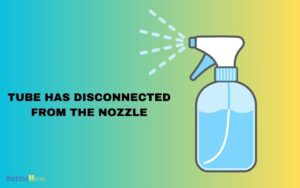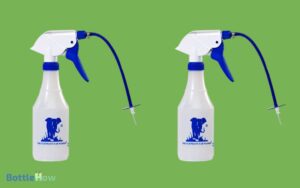How to Wet Hair Without Spray Bottle? Step-by-Step Guide!
To wet your hair without a spray bottle, you’ve got several straightforward options. First, you can use your hands: simply cup them under running water and massage the water gently into your hair.
Alternatively, fill a sink or basin, dip your hair in, and use a wide-tooth comb to guarantee even saturation.
For a thorough soaking, standing under the shower works well. If you prefer a more controlled method, pour water over your hair from a cup or mug, focusing on the roots.
Finally, a damp towel wrapped around your hair can add moisture without too much mess. These techniques offer a range of possibilities tailored to your needs.
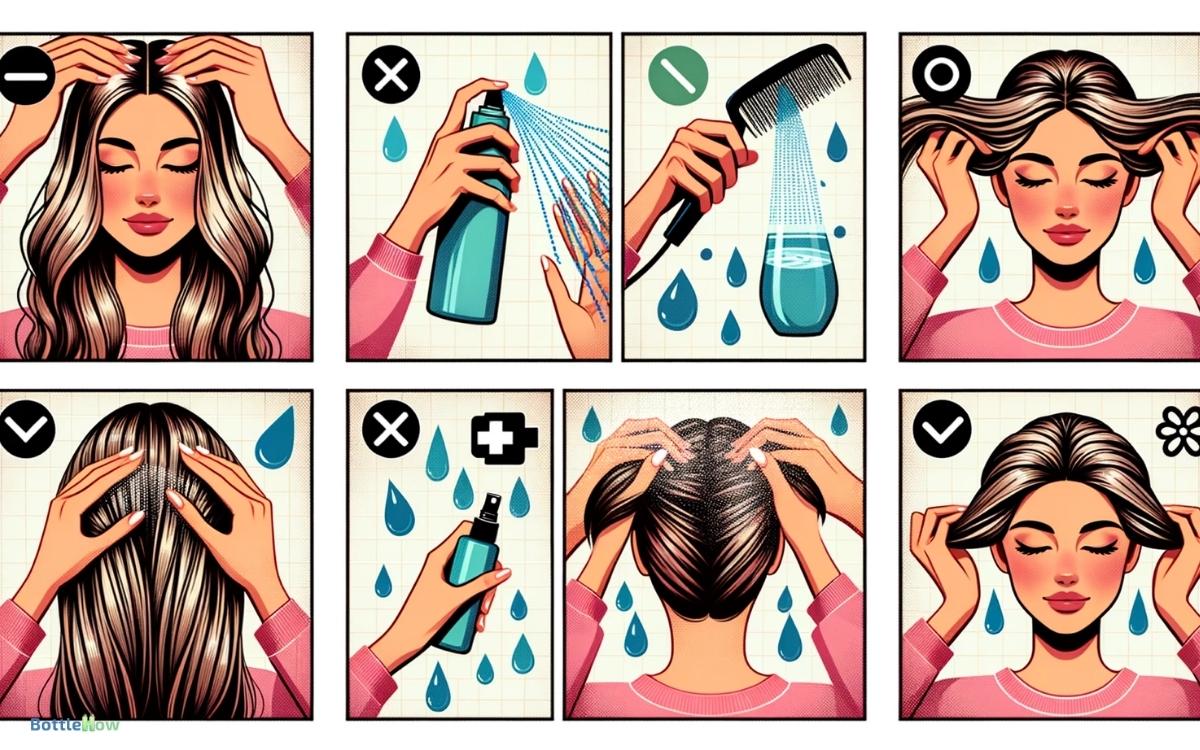
Key Takeaways
Using Your Hands
Using your hands to wet your hair can be a simple and effective method, especially when you’re without a spray bottle. Simply scoop up some water with your hands and gently run it through your hair until it’s evenly damp. This approach works well when you’re in a hurry or don’t have access to other tools. If you’re multitasking and also need to figure out how to remove spray mop bottle, checking the manufacturer’s instructions can help ensure you do it correctly.
Begin by thoroughly washing your hands to make sure they’re clean and free of any unwanted residues. Cup your hands under running water and gently scoop a small amount up.
You’ll want to start at the roots, gradually working your way to the tips of your hair. Apply the water with gentle, massaging motions, mimicking the rainfall, to evenly distribute moisture throughout your scalp and hair.
This tactile method not only allows you precise control over the amount of water you use but also promotes relaxation and a deeper connection to the nurturing process. It’s an especially useful technique for those dedicated to personal care and client comfort.
Sink or Basin Method
Before you start wetting your hair using the sink or basin method, it’s essential that you gather all necessary supplies, including a towel, comb, and any hair products you might use afterwards.
Once you’ve got everything at hand, perfecting the proper drenching technique will guarantee your hair is evenly wet without unnecessary mess or waste.
This method isn’t just about dunking your head under water; it’s about applying a method that meets your hair’s specific needs and prepares it ideally for styling or treatment.
Gather Necessary Supplies
To wet your hair using the sink or basin method, you’ll first need to gather a few essential supplies.
Here’s a concise list to make sure you’re prepared:
- Clean Basin or Sink: Make sure it’s clean to avoid any dirt transferring to your hair.
- Towel: Choose a soft, absorbent towel to gently dry your hair without causing frizz or damage.
- Wide-Tooth Comb: This will help detangle your hair gently while it’s wet, preventing breakage.
- Temperature-Adjustable Faucet: If possible, use a faucet that allows you to control the water temperature to suit your comfort and hair type.
These tools will help you serve others by demonstrating a considerate and efficient approach to hair care.
Proper Drenching Technique
Start by leaning over the basin, allowing your hair to hang freely and fully immerse under the tap.
Turn on the water to a comfortable temperature; too hot or too cold can be unpleasant and less effective.
Use your fingers to comb through your hair, making sure the water saturates every strand from roots to tips.
This method allows for thorough wetting, important for even application of products or treatments that follow.
Next, gently lift sections of your hair to allow the water to reach the scalp, promoting ideal hydration.
Remember, a methodical approach guarantees no part remains dry. Once fully saturated, you can proceed with applying shampoo or conditioning treatments, knowing you’ve set a strong foundation for effective hair care.
Under the Shower
Stepping under the shower provides a thorough and efficient method to evenly saturate your hair with water.
When you’re assisting someone, perhaps a client or a family member with limited mobility, this method can be particularly beneficial.
Here’s how to make the most of this simple technique:
- Adjust the Water Temperature: Guarantee the water is comfortably warm to prevent any discomfort.
- Control the Water Flow: Use a gentle, steady stream to avoid overwhelming the person you’re assisting.
- Section the Hair: Divide hair into manageable sections to make certain complete saturation.
- Use a Gentle Touch: Apply a light pressure to massage the scalp, enhancing the relaxing experience of the shower.
This approach guarantees the hair is perfectly prepped for any further styling or treatment.
Using a Cup or Mug
When opting to wet your hair using a cup or mug, it’s important to choose the right container that fits comfortably in your hand and holds enough water to cover your hair thoroughly.
You’ll find that mastering effective pouring techniques can prevent unnecessary spillage and guarantee an even distribution of water throughout your locks.
Consider using a ceramic mug for its sturdiness and heat retention, especially if you’re using warm water to open up your hair cuticles.
Choosing the Right Container
Selecting an appropriate container, such as a cup or mug, is crucial for effectively wetting your hair without a spray bottle.
Here are four key considerations to keep in mind:
- Material: Opt for a container made of unbreakable material like plastic or silicone, especially if you’re using it in a slippery bathroom environment.
- Size: Choose a size that’s easy to handle and holds enough water to thoroughly wet your hair without needing constant refills.
- Shape: A mug with a spout or a cup with a pouring edge can offer more control and reduce spills.
- Handle: Make sure the handle is sturdy and comfortable to grip, aiding in precise control during use.
Effective Pouring Techniques
After choosing the right container, mastering effective pouring techniques guarantees you wet your hair evenly and efficiently. Begin by filling your chosen mug or cup halfway to avoid spills.
Tilt your head forward over the sink or tub and start pouring slowly at the roots, allowing the water to run down naturally.
Use your free hand to guide the water through your hair, making sure all areas receive moisture. This method not only conserves water but also gives you better control over the wetting process.
| Step | Action | Tip |
|---|---|---|
| 1. Position | Tilt head forward | Prevents water from running into eyes |
| 2. Pour | Begin at the roots, move slowly | Ensures even distribution |
| 3. Guide | Use free hand to spread water | Covers all hair areas |
| 4. Repeat | Adjust water as needed | Maintains control and efficiency |
| 5. Finalize | Check for missed spots, reapply if needed | Guarantees thorough wetting |
Damp Towel Technique
To effectively wet your hair without a spray bottle, gently wrap a damp towel around your head, making sure it covers all areas evenly.
This method is particularly useful when you want to evenly moisten your hair without saturating it completely.
Here’s how to master the damp towel technique:
- Choose the Right Towel: Opt for a lightweight, microfiber towel that retains moisture well.
- Moisten the Towel: Soak the towel in lukewarm water and wring out excess water.
- Wrap Technique: Lay the towel over your head and twist gently to cover all hair areas.
- Duration: Let the towel sit for 5-10 minutes, depending on your hair’s thickness, to achieve the desired dampness.
This approach ensures a gentle and even distribution of moisture, ideal for preparatory hair treatments.
Sponge Soaking Method
When contemplating the Sponge Soaking Method for wetting your hair, it’s essential to begin by selecting the right sponge.
Different sponges absorb and release water differently, so understanding these properties will help you choose one that maximizes water distribution across your scalp and hair.
Next, we’ll explore various sponge soaking techniques to make certain you’re using your chosen sponge to its fullest potential.
Selecting the Right Sponge
Choosing the right sponge is essential for effectively saturating your hair using the sponge soaking method. The options vary, but not all will suit your needs.
Here’s what to look for:
- Absorbency: Opt for a highly absorbent sponge that can hold ample water without dripping excessively.
- Texture: A soft yet dense sponge is gentle on the scalp and hair, reducing the risk of damage.
- Size: A larger sponge covers more area quickly, but make sure it’s comfortable to hold and maneuver.
- Durability: Select a sponge that withstands frequent use without falling apart, ensuring longevity and cost-effectiveness.
Sponge Soaking Techniques
Now that you’ve selected the perfect sponge, let’s explore how to effectively use it to wet your hair through the sponge soaking method.
First, immerse the sponge in clean water until it’s fully saturated. This guarantees that every pore of the sponge is filled with water, ready to transfer to your hair.
Gently squeeze to eliminate excess water, maintaining enough moisture within the sponge for effective application.
Apply the sponge to your hair, starting from the roots and moving towards the tips. Use a dabbing motion rather than dragging the sponge along your strands.
This technique allows the water to seep into your hair uniformly without causing any damage or unnecessary stress to your hair fibers.
Maximizing Water Distribution
Mastering the distribution of water across your hair using the sponge soaking method guarantees that every strand receives the moisture it needs.
This technique isn’t just effective; it’s also a thoughtful way to make sure that your hair care routine is as nurturing and efficient as possible.
Here’s how you can optimize the water distribution:
- Select the Right Sponge: Choose a natural, porous sponge that holds a lot of water without dripping.
- Soak Evenly: Submerge the sponge completely in water to make sure it’s evenly saturated.
- Gentle Pressing: Press the sponge onto different sections of your hair, squeezing slightly to release water uniformly.
- Repeat if Necessary: Depending on your hair’s thickness and length, you might need to re-wet the sponge and apply several times.
Cotton Ball Dabbing
Dabbing your hair with a cotton ball soaked in water offers a gentle, precise method to selectively moisten strands without the need for a spray bottle.
This approach is particularly useful if you’re aiming to apply hair products unevenly or target specific areas without saturating the entire head.
Gently press the wet cotton against your hair, allowing the moisture to absorb into the strands. This method gives you control over the amount of water you’re using, reducing waste and avoiding excessive dampness that can lead to longer drying times or dilute product effectiveness.
It’s an ideal technique for touch-ups or when managing hairstyles that require minimal moisture. This tailored application ensures you cater to individual hair needs with meticulous attention.
Pouring From a Pitcher
Using a pitcher to wet your hair allows for quick and even distribution of water across larger sections, making it ideal for thorough moistening before styling or shampooing.
This method can be particularly helpful when you’re aiming to saturate your hair efficiently, especially if you have thick or long hair that absorbs a lot of water.
Here’s how to do it effectively:
- Choose the Right Size: Opt for a pitcher that holds enough water to cover your entire head without needing a refill.
- Control the Pour: Start at the roots and pour slowly to control the flow and avoid wastage.
- Use Warm Water: This helps open hair cuticles, allowing better moisture absorption.
- Repeat if Necessary: Depending on your hair’s length and thickness, you might need to pour a second time to ensure complete saturation.
This technique isn’t only efficient but also ensures that your preparations for hair treatment are done with care and effectiveness.
Using a Washcloth
While the pitcher method offers a quick way to saturate your hair, a washcloth allows for more targeted and gentle dampening, perfect for specific areas or minimal moisture needs.
You’ll find this technique particularly beneficial if you’re aiming to apply treatment or styling products unevenly or only to certain sections of your hair.
Start by soaking the washcloth in lukewarm water to guarantee comfort and effectiveness. Wring it out slightly, so it’s damp but not dripping. Then, gently pat or stroke the areas of your hair that require moisture.
This method gives you control over the amount of water you use, reducing the risk of over-wetting, which can be essential when managing different hair types or styles.
Submerging in a Tub
Another effective method for thoroughly wetting your hair is to submerge it entirely in a tub filled with lukewarm water.
This approach not only guarantees that every strand gets soaked but also allows for a more uniform dampness, which is especially beneficial if you’re preparing to apply hair treatments.
Here’s how you can master this technique:
- Fill the Tub: Make sure the water is lukewarm to prevent any discomfort.
- Gradually Submerge: Lean back slowly, allowing your hair to flow into the water.
- Soak Thoroughly: Gently swish your hair around to ensure all areas are wet.
- Rise Gently: Stand up slowly to let the excess water drip off naturally.
This method is ideal for those who value precision in hair care.
Applying Wet Wipes
If you need a quick method to dampen your hair without full immersion, applying wet wipes can be a highly effective alternative.
Choose wipes that are gentle and free from harsh chemicals to make sure they’re kind to your scalp and hair.
Start by gently pressing the wipe against the roots and slowly move down to the tips. Confirm the wipe is sufficiently moist but not dripping wet, to avoid oversaturation.
This technique is particularly useful if you’re looking to redefine curls or calm frizz temporarily. It’s also an excellent way to refresh your hairstyle without the need for a full wash.
For those assisting others, this method offers a discreet and comfortable way to manage hair care efficiently.
Using a Watering Can
Using a watering can offers a unique and controlled way to moisten your hair without saturating it completely.
This method is especially useful if you’re aiming to lightly dampen your hair for styling or to evenly distribute hair treatments without using too much water.
Here’s how you can achieve the best results:
- Choose the Right Can: Select a watering can with a long spout for better reach and control.
- Adjust the Water Flow: Make sure the rose (the spout end) delivers a gentle shower; you don’t want a torrent.
- Lean Over a Sink: Minimize mess by leaning over a sink while you pour.
- Distribute Evenly: Move slowly and methodically to cover all areas of your hair.
This method is efficient and gentle, perfect for those who help others maintain healthy hair without fuss.
Conclusion
So, you’ve mastered the art of wetting your hair without a spray bottle—congratulations! Who knew that the same tools you use to water plants or clean the dishes could double as your personal hair salon equipment?
Whether you’re dunking your head in a sink or delicately dabbing with a damp towel, your innovative approach proves there’s no need for fancy gadgets.
Embrace your resourcefulness; after all, necessity isn’t just the mother of invention, but also the stylist of your hair routine!

